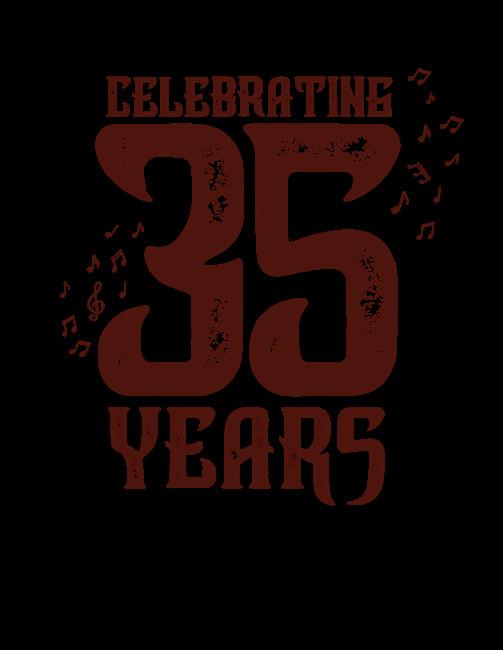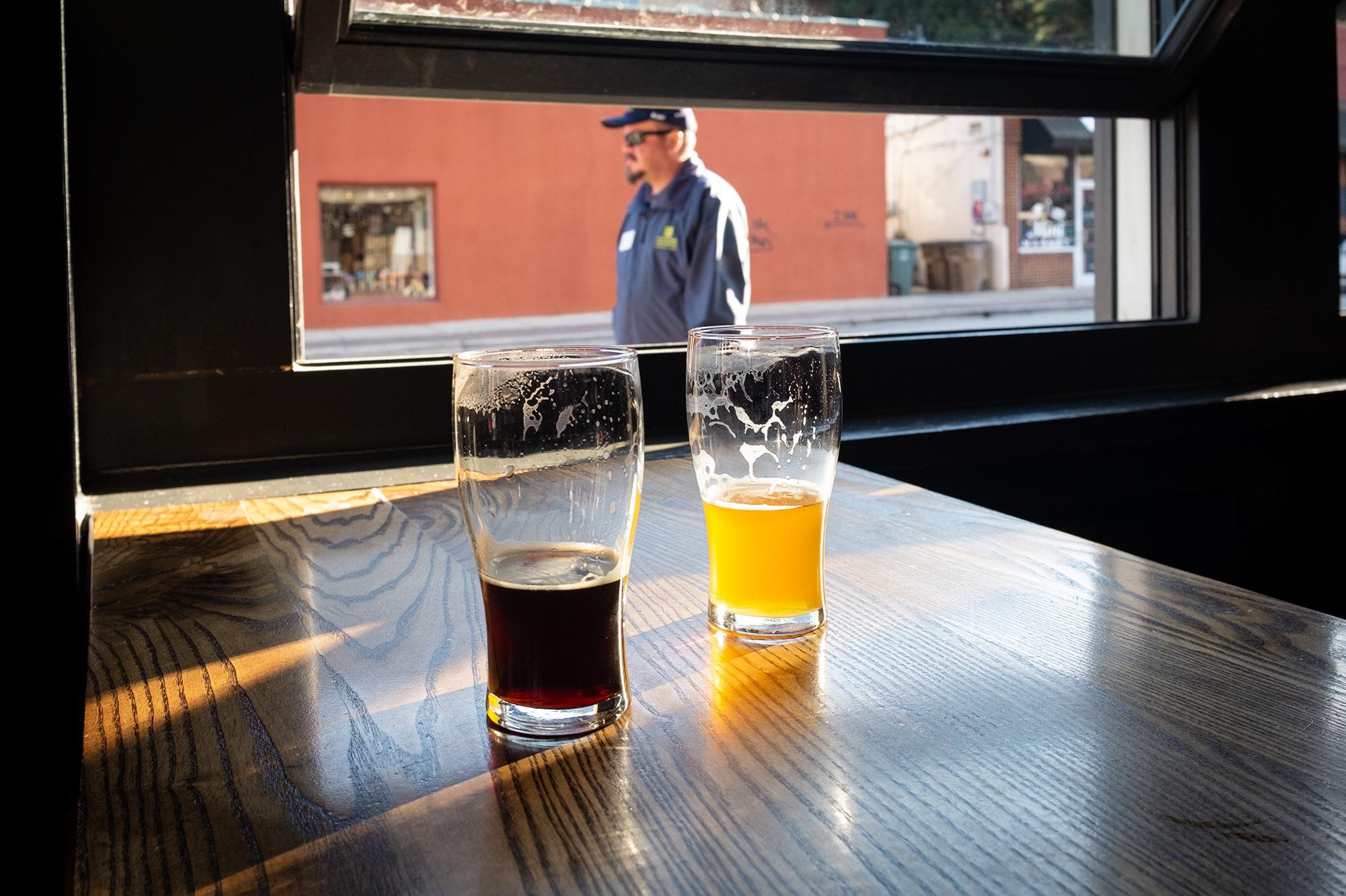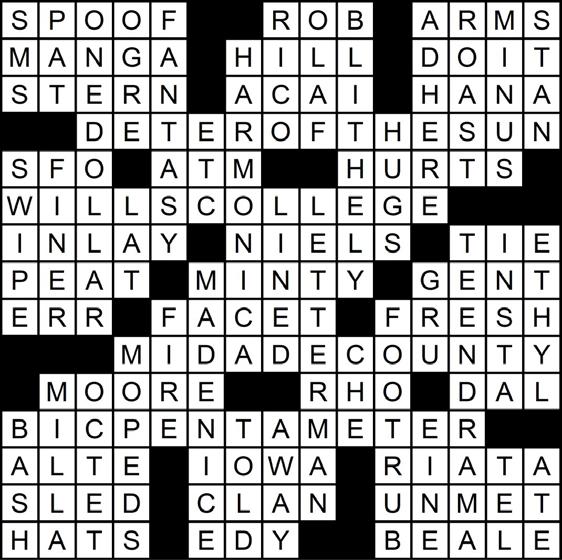




THURSDAY MARCH 23
Drafts on the Pass @ Paddled South Brewing Co. (HP) 6 :30 p.m.

Paddled South has partnered with Merric Jackson of Down River Catering to bring you an exclusive dining experience. Each course of a five-course meal is paired with a Paddled South beer for a complex and flavorful dinner. Purchase tickets at the brewery.
Water Circus: Gold Unit @ Winston-Salem Fairgrounds (W-S) 7:30 p.m.
Cirque Italia presents Aquatic Spectacular, a gravity-defying cirque show featuring a custom-designed 35,000 gallon water stage. Find more information and purchase tickets at wsfairgrounds.com
FRIDAY MARCH 24
The Curious Incident of the Dog in the Night-Time @ Hanesbrands Theatre (W-S) 7:30 p.m.

In this Tony Award-winning play, Christopher, a 15-year-old neurodivergent boy, goes on a life-changing journey as he sets out to identify the true culprit after he’s accused of killing his neighbor’s dog. Purchase tickets at intothearts.org
by MICHAELA RATLIFFRoe @ Pam and David Sprinkle Theatre (GSO) 7:30 p.m.
The UNCG School of Theatre presents Roe, a play written by Lisa Loomer that focuses on the people behind Roe v. Wade, the legal case granting the right to an abortion. Watch as Norma McCorvey, known as Jane Roe during the case, battles the effects of religious beliefs and personal interests on her moral compass as she defends women’s reproductive rights. Purchase tickets and find more information at vpa.uncg.edu
SATURDAY MARCH 25
2023 Run on the Runway @ Piedmont Triad International Airport (GSO) 8 a.m.
Lace up your running shoes and participate in this run benefiting the Second Harvest Food Bank of Northwest NC, Greensboro Urban Ministry and Open Door Ministries of High Point. The course is wheelchair and baby stroller friendly. Visit ptirun. com for more information and registration.
Community Day Street Fair @ South Little League (W-S) 10 a.m.
South Little League invites you and your family to their first community day! Shop from more than 80 vendors, check out collectables from sports retailers and participate in WFU baseball giveaways. Visit the event page on Facebook for more information, and visit South Little League’s Facebook page for vendor spotlights.
The Funny Godmothers is made of two clean and clever comedy acts featured on Dry Bar Comedy. Karen Morgan began her comedy career on Nickelodeon’s Search for the Funniest Mom in America, while Tara Brown was named Best Comedian for 2019 by Queen City Nerve. Grab your tickets at highpointtheatre.com
SUNDAY MARCH 26
Adopt-a-Stream Clean-Up @ Greensboro Arboretum (GSO) 10 a.m.

Do your part in saving the planet and join Triad Wild and other community groups for a stream cleanup along the creeks through the park and over into Starmount to Holden Rd. Visit the event page on Facebook for more information.
NC Reading Association Literacy Conference @ Benton Convention Center (W-S) 11 a.m.
This three-day literacy conference is full of speaking engagements, book discussions that explore literacy and how it affects learning in the classroom and everyday life. Register at the conference or ahead of time at ncreading.org/2023-conference
WEDNESDAY MARCH 29
Pixel: Digital Art Installation Artist Reception @ the Brewer’s Kettle (HP) 7 p.m.

This month’s exhibition at The Brewer’s Kettle features all-digital art including digital paintings, photography and video game art. Stop by a little early for a free beer tasting at 6! Visit the event page on Facebook for more information.
Present~Continuous @ Organ Hall, UNCG (GSO) 7:30 p.m.
This concert by New Music Greensboro features original compositions by Aitana Kasulin, Silvia Olivero and others. Visit vpa.uncg.edu for more information.
Get the full events calendar by signing up for the Weekender, straight to your inbox every Thursday.
pico.link/triadcitybeat
This column was adapted from a section of our Monday newsletter, the Monday Mix. To sign up, visit our website.
BUSINESS
PUBLISHER/EXECUTIVE EDITOR



Brian Clarey brian@triad-city-beat.com
PUBLISHER EMERITUS
Allen Broach allen@triad-city-beat.com
OF COUNSEL
Jonathan Jones
EDITORIAL
MANAGING EDITOR Sayaka Matsuoka sayaka@triad-city-beat.com

CITYBEAT REPORTER
Gale Melcher gale@triad-city-beat.com
1451 S. Elm-Eugene St. Box 24, Greensboro, NC 27406 Office: 336.681.0704
SALES
KEY ACCOUNTS
Chris Rudd chris@triad-city-beat.com
AD MANAGER Noah Kirby noah@triad-city-beat.com
CONTRIBUTORS
Carolyn de Berry, John Cole, Owens Daniels, James Douglas, Michelle Everette, Luis
H. Garay, Destiniee Jaram, Kaitlynn Havens, Jordan
Howse, Matt Jones, Autumn
Karen, Michaela Ratliff, Jen
Sorensen, Todd Turner
First copy is free, all additional copies are $1. ©2022 Beat
WEBMASTER Sam LeBlanc
ART ART DIRECTOR Aiden Siobhan aiden@triad-city-beat.com
COVER:
Members of the Anime Aggies pose for a shot.
Photo by Carolyn de Berry
Design by Aiden Siobhan
by Sayaka Matsuokaopaganda is a form of propaganda used to describe depictions of police in a positive light while obscuring negative qualities, most often through mass media, with the intent of swaying public opinion for the benefit of law enforcement,” according to Wikipedia. And it happens all the time. Examples include feel-good cop shows and perpetuation by news media of one-off cop stories. One recent example of ABC45’s story about how the High Point Police Department is publishing a children’s book. Cute, right? Not so much.
According to the news report, HPPD is publishing Little Eli and the High Point Police Department, which tells the story of a real-life kid named Eli who befriended members of the police department when they were out investigating a crime scene. More details about the book weren’t included, but it’s not hard to see how this falls into the category of copaganda. The story itself perpetuates the narrative that law enforcement are our friends while the book aims to sell that narrative to children from an early age. And it’s insidious to say the least, especially when you consider that FOX 8 recently did a story about how HPPD has been justifying traffic stops to curb violent crime.
In that story, the news outlet quotes HPPD Deputy Chief Anthro Gamble. “Traffic stops are the key to reducing our violent crimes,” Deputy Chief Anthro Gamble said.
It’s a proactive approach to policing. “Our officers are out there actively looking for crime taking place,” Chief Stroud said. “It can’t be all calls you get in.”
Of course violent crime is an issue. But what this kind of reporting does is perpetuates the idea that more traffic stops, more “officers... stopping vehicles for reasonable suspicion and probable cause to get criminals and guns off the streets,” is the solution. It takes a convenient anecdote about how one of these traffic stops led to seizing five firearms as justification for the method. But the data doesn’t bear out.
In fact, multiple studies have shown that “probable cause” and “reasonable suspicion” is often used by police to pull over people who end up becoming victims of police brutality. I mean, Tyre Nichols JUST DIED, because of something like this. In that incident, the officers involved said that they pulled Nichols over for reckless driving. In the end, the police chief found that there was no evidence to that and stated, “We’ve taken a pretty extensive look to determine what that probable cause was and we have not been able to substantiate that.”
If you need more proof on how traffic stops harm communities of color, there’s been multiple studies published in the last ten years that show this, including a 2015 New York Times article that uses Greensboro as a case study. That’s why this kind of journalism is irresponsible at best and extremely harmful and racist at worst. And it’s time that we all demand better.
To suggest story ideas or send tips to TCB, email sayaka@triad-city-beat.com
The city of Greensboro is researching whether community land trusts can help increase affordable housing.
City leaders in Greensboro are looking into ways to provide diverse affordable housing options in the community.
On March 16 during a work session, city council members discussed the possibility of establishing a community land trust.
A community land trust or a CLT is a nonprofit organization that holds land on behalf of a community as a long-term steward to preserve community assets such as affordable housing.

According to the city’s website, many Greensboro properties are “vacant, abandoned, or tax delinquent,” and that these properties are worth less than the amount of money owed in taxes, liens and property repairs. A CLT would be a means of freeing up the properties to provide affordable housing for current and future generations.
During the work session, the department’s director Michelle Kennedy commented that they are currently in the “education phase” and are partnering with Grounded Solutions Network, a national nonprofit organization that helps local and state governments “identify and implement policies to build and preserve equitable neighborhoods,” according to their website
Kennedy added that they are currently in the “outreach portion” and that there are “no big decisions that have to be made at this point.”
Jason Webb, Community and Technical Assistance Principal for Grounded Solutions Network, told city leaders that the timeline to have a CLT “up and running” could be between six and eight months. “I can work as fast as you
guys want me to work,” Webb said.
The city’s website says that initial focus areas for the city’s CLT will be in District 1, represented by Sharon Hightower; District 2, represented by Goldie Wells; and District 5, represented by Tammi Thurm. Redevelopment will be focused in Eastside Park, Ole Asheboro and Willow Oaks areas, while reinvestment focus areas will include Dudley Heights, Glenwood, Kings Forest, Mill District and Random Woods.
How does a Community Land Trust work?
Webb said that a CLT is traditionally created using a “tripartite board of directors” comprised of the community members, the property owners and local stakeholders.
If a home in the community is in danger of being foreclosed, under a CLT model, banks must give the CLT an opportunity to intervene, and if for some reason the homeowner can’t afford the home anymore, “the CLT can step in and purchase that home from the bank,” Webb said.
Webb said that the first step in the process is to make sure that leadership and the community is “comfortable with the model.” The next phase of the process will be about “feasibility and business planning.
Next, they will “hone in on program design,” Webb said, adding that it will focus on how many units the CLT will have and where the assets are coming from.
Assistant Director of Housing and Strategy Cynthia Blue said the city gets properties from a variety of different sources, some of them come through Guilford County tax foreclosures.
“Those that don’t sell come into the city,” she said.
The last phase will be centered on “support, implementation, and launch,” Webb said, with Grounded Solutions Network helping to “onboard the new CLT staff, coach them, making sure that we’re continuing to build the capacity of this new organization so that they can be set up for success.”
“Land can come from a number of different ways,” Webb said during the work session, adding that it can come from the city. Webb also said that the CLT can come up with an acquisition strategy on its own, as well as receive donations from individuals. District 1 representative Sharon Hightower commented, “So it won’t be the city that owns the land, it’ll be the CLT, but we could donate the land into the CLT for them to then build a house on.”
Smalls told TCB that “a lot of decisions will be determined once the initiative is to move forward” and that the land on which the homes would be built has not been chosen yet.
Residences that are bought or built on CLT-owned land using one-time public or private investment are sold to low-income buyers. The buyer only purchases the house, not the land it is built on. The homeowner leases the land from the CLT in an affordable 99-year ground lease that can be calculated based on the buyer’s income, Webb said. When the buyer decides to resell,
the CLT will manage the sale’s process and sell the home to another low-income buyer. While the homeowners agree to sell the home at an affordable price, improvements they make to the house can be considered upon resale.
Webb clarified that they want to be “very deliberate” about ensuring that these properties can be generational, held within families, adding that every homeowner will go through proper estate planning and get things down in writing because they “don’t want these properties to wind up in probate — to be argued and everything else.”


Webb said that “while the income qualification does not apply” to the heirs, “the primary residence does,” adding that the heirs would have to live in the home and cannot utilize it as a rental property.


“We see this as an important stepping stone toward full homeownership by giving folks the ability to come in and be supported,” Webb said.
Webb also mentioned that the model of the CLT itself is flexible, adding that “none of this stuff is etched in stone” and that the CLT could be designed to suit Greensboro’s needs.
The origins of community land trusts go back several decades. Founded in 1969, one of the earliest CLTs was New Communities — a 5,700-acre land trust and farm collective owned and operated by Black farmers in Southwest Georgia.

Dr. Stephen Sills — vice president of the Research, Policy and Impact Center and former director at the Center for Housing and Community Studies at UNCG — told TCB that it takes “a significant amount of capital to seed the start of a community land trust [and] it takes properties that are available for rehab. And the city certainly has both of those things.”
As one of the tools that can help create affordable housing, Sills mentioned that CLTs can also serve as a way to “stop the bleeding” of converting single-family units into rental homes.
“When you’re in a rental, you’re paying an excess of the mortgage,” Sills said. “That’s the profit margin that the landlord is seeking. When you’re a homeowner, you’re paying the mortgage and the upkeep, and the profit that the landlord would be getting is going into your pocket.”


Sills said that CLTs can help families save money and build resources for a future downpayment, as well as build some equity in the home.
But one of the most important aspects of a CLT is that it helps people build credit, said Sills, who has analyzed Home Mortgage Disclosure Act data from the Piedmont Triad region since 2006.
“The No. 1 barrier for minority homebuyers in getting approved for a loan is credit,” he said, adding that his research showed that “minority home buyers are 25 percent less likely to be approved for a home.”
One of the ways people can accumulate wealth is by inheriting it through homeownership. However, the country’s history of discrimination against minorities including redlining — the systematic denial of services such as mortgages, insurance loans and other financial services to residents of certain areas, races or ethnicities — has restricted their opportunities to buy homes. The affordability provided by a CLT could help reduce barriers that stand in the way of potential buyers.
“Owning a home, being able to pay off that mortgage… in a timely fashion really does build credit that they would not have had access to as a renter,” Sills concluded.
A 2007 study conducted by the Lincoln Institute of Land Policy on the effectiveness of CLTs found that on average, homes were resold to households earning 4 percent lower on the median household income scale than the original purchasing household, and the homes sold at prices averaging $17,317 less than the original purchase price.
“These numbers support the claim that CLTs can in fact preserve affordability for subsequent generations of low income home buyers,” the study stated.
According to Webb, there are more than 300 CLTs nationwide.

CLTs have been established all over the state in cities like Asheville, Charlotte, Durham and Chapel Hill.
In May, Charlotte’s West Side Community Land Trust secured land for 120 affordable senior apartments and broke ground on the project in November. With expected completion in spring 2024, the apartments will be rented by the CLT to seniors 55 and older who make between 30-80 percent of the area’s median income. Monthly rent will range from $474 to $1,500.
Assistant Director of Finance and Administration Eunika Smalls said that the community is “vitally important to setting up these organizations, but we haven’t even gotten there yet.
“We’re just introducing the concept,” Smalls said.

The department will host two public input sessions over Zoom on March 29, from 10 a.m.-12 p.m. and 6-8 p.m.

They say that once is an isolated incident, twice is a coincidence and three times denotes a pattern.
On Jan. 12, former Greensboro police officer Kenneth Eugene Adams was charged with sexual battery, assault on a female and giving alcohol to an underage person. Eight days later, on Jan. 20, another former Greensboro police officer, Joshua Daniel Oliver, was charged with six counts of statutory sex offense and six counts of indecent liberties with a minor. Then, on Jan. 31, Matthew Hammonds, a former crime analyst with the Greensboro Police Department, was arrested and charged with three counts of felony second-degree sexual exploitation of a minor. All were fired from the department after their arrests which happened in quick succession during a single month, earlier this year.
When the arrests first took place, several local media outlets reported the crimes. But a deeper look into the patterns of behavior within law enforcement that can lead to these kinds of crime remained untouched.

Is it just coincidence that three staff members — two of them sworn officers — from the same department were all arrested and charged of sex crimes in one month? Data and research into the broader culture of policing provides insight into these recent events.
“Some of the deepest rooted problems are that the police departments embody this sense of dominance,” said Dara Purvis, professor of law and the assistant dean of research and partnership at Penn State Law. “This is a way to prove that you have power over the people in your community. And it’s made worse because it becomes part of the job. In the context of sexual assault, sexual violence can become a sign of dominance.”
In press releases by GPD about the arrests, it was made clear that none of the offenders were on duty when the crimes occurred. Even so, Purvis, who co-authored a 2020 article published in the California Law Review looking at sex crimes committed by police, said that three firings in one month show that the problem isn’t just “some bad apples.”
“I think it’s clear that there is much more going on with that,” she said. “That it’s a systemic problem that’s going on in these instances.”
According to a six-year investigation by the Associated Press published in 2015 that looked at data from 2009-14, 990 officers lost their law enforcement licenses because of sexual assault or other sex-related allegations. Of the 990, 549 or 55 percent were decertified because of allegations of rape, child molestation and other acts defined as sexual assault by the Deparment of Justice. Forty-four percent lost their licenses for other sex crimes, such as possessing child pornography, as in the instance of Matthew Hammonds.
According to the Cato Institute’s National Police Misconduct Reporting Project 2010 Annual Report, “sexual misconduct was the second most common form of misconduct reported throughout 2010.”
And that’s with the understanding that sexual crimes go underreported.
“We know that victims of sexual assault don’t report it; it’s underreported,” Purvis said. “Formally reporting it for a whole variety of reasons is difficult. And that’s magnified when the perpetrator is a police officer. You’re asking to report to people he knows, trusts, works with.”
A study published by Bowling Green State University in 2014 backs up this fact.
“Cases of sex-related misconduct and crime have been described as hidden offenses that
are likely to go unreported and, hence, difficult to document and study,” the study reports. “Victims may not report instances of police sexual misconduct to authorities because they feel humiliated or they may fear retaliation. Victims may also encounter barriers to filing a complaint since that process can be unnecessarily difficult and/or intimidating.”
Even the Department of Justice acknowledges this as a problem.
“Because victims of sexual misconduct by law enforcement may be in the custody or under the authority of their perpetrators, these crimes often go unreported,” their fact sheet states. “Victims may not know to whom they can report.”
And even if survivors are able to report the issues, oftentimes that data is
Three members of GPD were fired in January for sex-related crimes. What does that reveal about police culture?
by Sayaka MatsuokaThe Greensboro Police Department in downtown Greensboro PHOTO BY SAYAKA MATSUOKA
hard to access by the wider public.
“Researchers are also hard-pressed for data on cases that do get officially reported because of the reluctance of officers and organizations to expose cases of sex-related police misconduct to outside scrutiny,” the Bowling Green study states.
For the purposes of this article, Triad City Beat requested the names of all GPD staff and officers who have been fired from the department in the last five years due to sex-related crimes. That public records request was filed on Feb. 9 and has yet to be fulfilled.
And part of the reason for that may be because institutions are less likely to admit when an officer has committed a crime on duty, compared to the ones who were fired from GPD recently who were off-duty.
“It probably is relevant that they were off duty,” Purvis said. “It’s not really intersecting with their official duties. I think there is more of an institutional interest of protecting the behavior of officers while they’re on duty than when they are in their personal life.”
One explanation could be what scholars and critics have called the “blue wall of silence.”
“There’s an immense amount of trust between officers,” Purvis said. “But if someone is accused of misconduct that trust operates to create a blue wall. They close ranks to protect one another. I know why it exists but it operates to magnify to make it difficult to bring allegations against an officer.”
In 2020, KQED and NPR analyzed records obtained through the California Reporting Project that found 103 instances of sexual misconduct by officers in California. In 35 of those cases, other officers knew but did not act; 33 of the cases involved nonconsensual or coercive sexual misconduct.
Another study from 2003 by Timothy Maher of the University of Missouri-St. Louis asked 40 officers from 14 police agencies how many of their fellow colleagues participated in sexual misconduct. The officers estimate that 36.5 percent of “all officers in their respective departments participated in at least one of the eight forms of misconduct.”
‘Police work is conducive to sexual misconduct’
So why does this happen?
Studies and experts argue that the very nature of policing creates a culture in which sexual misconduct is able to permeate.
“Police work is conducive to sexual misconduct,” the Bowling Green study states. “The job affords unique opportunities for rogue police officers to engage in acts of sexual deviance and crimes against citizens they encounter.”
In fact, data captured by the Cato Institute states that “sexual assault rates
are significantly higher for police when compared to the general population.”

According to their data, there were 28.7 incidents of sexual assault by the general public per 100,000 people, compared to 67.8 incidents for law enforcement. That’s more than twice the rate comparatively.
“The reason why some people join police departments is because they feel disempowered and this is a way to take some power back,” Purvis explained. “That idea helps to explain Black police officers who partake in violence against a Black victim.”
That sort of power dynamic can extend to staff who aren’t sworn officers, Purvis said.
“Someone who is not a sworn officer but part of the police department is still part of that,” she said. “When asked, ‘What do you do?’ they’ll still say, ‘I work with the police.’”
Studies also note that police “commonly encounter citizens who are vulnerable.”
That was the case for the incidents involving the officers and staff fired from the GPD in January. In all three instances, the victims were underage.
In the Cato Institute’s study, 52 percent of the victims were minors.
Further data shows that, like with cases involving police brutality, the most marginalized communities are often the ones targeted.
The study that Purvis co-authored explains how officers typically “target the most vulnerable — namely women of color, transgender and gender-nonconforming people, victims of domestic abuse, and people suspected of engaging in criminalized activity” and how sexual misconduct disproportionately affects women of color.
In all 50 states, it is a crime for anyone, including officers, to commit sexual assault. The issue becomes grayer however, when it comes to the issue of sexual conduct between an officer and a person in custody.
Some states make it clear that any sexual contact between a police officer and a member of the public is a crime.
In North Carolina, Gen. Statute 14-27.31 is not written specifically about police officers but notes that “sexual activity by a substitute parent or custodian” is a felony.
“If a person having custody of a victim of any age or a person who is an agent or employee of any person, or institution, whether such institution is private, charitable, or governmental, having custody of a victim of any age engages in vaginal intercourse or a sexual act with such victim, the defendant is guilty of a Class E felony,” the law states.
The law also notes that the argument of consent cannot be used against these charges.
“I think it’s an okay approach, but I think there is power specifically in talking about police officers because this is a problem that is happening much more than lawmakers realize,” Purvis said.
She also noted how the language is vague when it comes to the issue of “custody.”
“There are situations where people don’t feel comfortable walking away from a police officer,” Purvis said. “For example, Tyre Nichols, he hadn’t been arrested. So there’s a question of whether people are in custody. You can understand why someone wouldn’t feel comfortable walking away from a police officer, but a judge may say, ‘Well you weren’t under custody.’”
In recent years, some states like Montana have revised their criminal definitions of consent to exclude sex acts between officers and members of the public. And in May 2022, Congress passed the Closing the Law Enforcement Consent Loophole Act, which makes it a crime for a federal law enforcement officer to engage in any sexual activity with someone in custody, or while
exercising their authority, regardless of consent.
However, the question of how investigations of sex crimes by police start at the departmental level remain.
“Unfortunately, as with statutes prohibiting such behavior, most police departments do not have official policies regarding sexual activity with civilians,” Purvis states in the article.
A look at the Greensboro Police Department’s Directives, updated in 2022, shows that the department does not have a clear policy when it comes to sex crimes against the public. There is a more robust use-of-force section post-2020, but none of the wording specifically mentions sexual assault.
Instead, the directives just include a blanket rule in which officers must understandably comply with local, state and federal laws. It is also noted that “any employee charged with or arrested for a violation of a criminal or traffic law or ordinance… will report such fact in writing to the office of the Chief of Police within three business days. The report shall include all pertinent facts concerning the violation.”
It should be noted that the directives have policies that prohibit sexual misconduct between employees.
TCB has made a public records request asking for the termination letters for all employees fired from the GPD for sex-related crimes in the last five years.
The termination letters for Oliver and Adams note violations to Department Directives 1.5.1 General Conduct and 1.5.4 Compliance to Laws and Regulations as reasons for their firings.
In a statement, Greensboro Police Chief John Thompson responded to the arrest of John Oliver.
“No Chief wants to make this kind of announcement and it deeply saddens me to be doing so again” he said. “However, what is most important is that we do everything in our power to promote transparency when hard things happen. When any allegation is made against an officer, it is thoroughly investigated. Upon learning the details of this investigation, sharing with the community was paramount…. We hold our personnel accountable and have systems in place to assure accountability. It is my hope that a commitment to these systems, policies, and standards will maintain that trust and support.”
According to Josie Cambareri, the GPD’s public information officer, “sexual misconduct falls under the employee misconduct policy. If there are criminal allegations of any kind made against an employee, that would immediately begin an internal investigation while a criminal investigation occurs. Once GPD is aware of such allegations, the employee is placed on administrative duty while the allegations are investigated. At times, the allegations are so serious (i.e. sexual misconduct), that the chief may terminate employment before a criminal investigation is complete.”
Cambareri pointed to the corrective action procedures in 7.2.1 of the GPD directives for reference.
While all three of the former GPD staff members were arrested and charged for their crimes, it remains rare for officers to be charged due to
inconsistent or absent departmental policies.
“I think that certainly arrests and criminal prosecutions are just the tip of the iceberg,” Purvis said. “You can read this criminal prosecution and say, ‘Well this is good, at least this police department is being more transparent,’ but it strikes me that these crimes are the clearest violations. There is no question of consent.”
If officers aren’t arrested or charged for their crimes, that can lead to a shuffling of police from department to department. This phenomenon has been called the issue of the “wandering cop,” and has been reported when it comes to the issue of police brutality, but is less understood when the crimes are sexual in nature.
“The officer shuffle occurs (and is criticized) for many types of misconduct, but it can be particularly problematic in the context of PSV as studies show that sexual offenders tend to commit their crimes over and over,” Purvis’ article states. “In general, sexual crimes have a high recidivism rate.”

According to the piece, one study found that approximately 40 percent of police sexual crimes were committed by an officer with at least one prior incident.
Prior demotions were not noted on any of the former GPD staff members’ pay records based on public records requests.
Kenneth Adams, 51, had worked at the department the longest, starting as a police officer in 2009. His starting salary was $32,500 and by the time he was fired in January, his salary was $64,841 per year. Officer Joshua Oliver had been with the department since September 2016. His starting salary was $36,444 and in January, it was $54,761. Lastly, Matthew Hammonds, the special crime analyst, started with GPD in 2018. His salary in 2019 was $46,570 and by January 2023, he was making $54,250 per year.
Purvis said that she’d like to see more statutes and internal police rules make it clear that police should not engage in sexual conduct with members of the public.
A report published by the International Association of Chiefs of Police in 2011 supports this idea.
“While strong policies prohibiting sexual harassment are necessary, relying on existing sexual harassment policies to cover matters of sexual misconduct involving members of the public is completely inadequate,” the report states.
Purvis also thinks there needs to be an understanding that the broader culture of policing is leading to these kinds of crimes.
“There is something at the core that is feeding into the power dynamic between the police department and members of the public,” she said.
One of the solutions to changing the male-dominated culture of policing is to simply hire more female officers, her article argues. Additionally, discus-
sions of masculinity and police culture have to be part of the process.
“Police officers … engage in the violence of hypermasculinity, but in a socially (and legally) acceptable way, justifying it as protection rather than danger,” Purvis writes in the California Law Review piece.

People are paying more attention to police brutality when it comes to the killing of unarmed people at the hands of police, but the conversation about sexual violence remains less visible.
“Police sexual violence is also a form of police brutality and should be included in any discussion addressing police violence against the public,” Purvis writes. “Categorizing PSV and police brutality separately perpetuates the notion that sexual assault of women of color and LGBTQ+ people by police officers is a less important problem than police violence against Black or African-American men.”


Part of the solution could be using police for less things, Purvis said.
“There are lots of services ostensibly provided by the police department that could be provided by other departments,” Purvis said. “Rather than thinking police departments can solve every single societal ill.”
And that’s a move that’s gained popularity in the last few years. In the Triad, Greensboro employs a co-response model while Winston-Salem is in the process of implementing an alternative response model for some 911 calls to be addressed by social workers alone.

Lastly, Purvis said that one solution that appears counterintuitive could be a key.
“Paying police officers more,” she said. “Because if you start to look at police officers who are coming from lower socioeconomic statuses, the power of the police officer is a way to gain some status. So what would happen if we paid them more and gave them status of a different kind that they didn’t have to take from other people. That runs counter to other suggestions, but there’s a variety of solutions.”


It takes only three people to make a riot, according to HB 40, the Protest Bill that has been ratified by both houses and which Gov Roy Cooper declined to veto. This means it’s the law of the land as of right now, so it’s worth exploring its terms.
The bill defines a riot as three or more people creating a “public disturbance.” In addition, they must exhibit “disorderly and violent conduct, or the imminent threat of disorderly and violent conduct.” The group of three or more must also commit “injury or damage to persons or property or create[s] a clear and present danger of injury or damage to persons or property” to be considered riotous.
They’re handing out misdemeanor charges for these offenses, to be upgraded to felony if the accused has caused more than $2,500 in property damage, has a weapon or “uses a dangerous substance.”
It threatens organizers, too, promising Class E felonies to anyone who “incites or urges another” in a demonstration that causes more than $2,500 in damages. And it opens them up to civil suits for damages.

It also elevates “assault on emergency personnel” to felony
status, even though we all know how loosely agents of law enforcement interpret the term “assault” when it’s on one of their own.
This law doesn’t explicitly make public protest illegal, though it comes close — aren’t all protests supposed to be “disorderly”? But it highly disincentivizes this fundamental civil right.
Ironically, the law seems crafted to quash the Black Lives Matter protests in the summer of 2020 and afterwards. But in reading it, the terms seem to apply to many of the right-wing public actions we’ve seen. The armed protest against the lockdown in Raleigh in May 2020 violated several of the terms of this law. The white supremacists with guns who were “protecting” the downtown Confederate monument in July 2020 could be charged with felonies under this law.
The people who fought police and stormed the US Capitol on Jan. 6, 2021 would be charged with felonies under this law, as would Donald Trump.
That’s the thing about setting a trap: It doesn’t always catch what you want it to.
John Cole Courtesy of NC Policy WatchThe bill defines a riot as three or more people creating a ‘public disturbance.’
 by Sayaka Matsuoka
by Sayaka Matsuoka


When Solomon Aladekoba was in ninth grade, he saw Naruto at a McDonald’s. He had just gotten out of class and ran to the convention center in DC when the world around him began to change. Characters from different manga and anime filled the streets, mingling here and there, getting lunch. It was surreal.
“We just lost our minds,” Aladekoba says. “It was the coolest thing I have ever experienced. Just seeing everyone nerding out in their various little groups, I was like, Oh, I’m with my people. This is dope.”
Ever since then, Aladekoba has been chasing that dragon. In the last decade he’s been to three anime conventions; this Saturday, he’s helping to host one on his home campus. Aladekoba, a sophomore at NC A&T State University, is the treasurer of the Anime Aggies, a club that’s more than 350 members deep. Founded by Rose Jackson in late 2021, the group is carving out a place for the HBCU’s students to celebrate their fandom in a safe space. This Saturday, they will host their very first anime convention on campus.“It originally started as a small thing for people to come and talk about anime,” Jackson says. “In our community, the Black community, liking anime is kind of frowned upon. So I wanted to open that gateway and say, ‘You can like what you like,’ and start a community to make friendships, open up the conversation.”
Jackson, the president of the club and a junior on campus, grew up in Detroit and went to predominantly Black schools as a kid. When she was introduced to anime through a friend
in fifth grade, she became hooked. But soon, she realized that liking the artform was akin to being a social outcast.
“People didn’t understand it,” she says. “If I asked if people liked anime, they would say, ‘No, it’s weird.’ In high school, it was very clear that we were not welcome because it was weird or it was ‘too white.’”
Anime is a Japanese form of animation that dates back to the early 20th Century. Much of the anime seen today is based on Japanese comics, known as manga. Like comic books in the states, they’re a popular form of entertainment that transcends gender and age. But in the US, the medium has only gained popularity in the last two decades with the rise of shows and movies like Dragon Ball Z, Sailor Moon, Spirited Away and, more recently, Demon Slayer and My Hero Academia
After being mocked for her affinity for anime, Jackson decided to distance herself from the culture. That was until she found out her dad was also a fan.
“My dad confessed that he likes anime too,” she says. “He had VHS tapes of Speed Racer and his favorite is Akira.”
Since then, Jackson has gotten deeper into the culture and is working to foster that love on campus. Many of the group’s members have never been to a convention, says Jackson, who has been to at least three.
“I want people to feel like they can be themselves,” Jackson says. “I want you to feel invited and enticed to stay. I want you to feel like you can absolutely positively be your most authen-
Rose: Jojo’s Bizarre Adventure and One Piece
Amerah: Death Note and Attack on Titan
tic self and not have to hide that.”
The convention will feature a Mario Kart tournament, cosplay contest and vendors to showcase their creations. If this one goes well, the group hopes to continue hosting for the next few years.
Amerah Silas, group member and NC A&T junior, experienced her first convention just last year. She dressed up as Nezuko from Demon Slayer and attended East Gate Comic’s convention in High Point. East Gate is the first Black-owned comic book shop in the Triad.“Growing up I was scared to go to cons,” Silas says. “I was in California in a mostly white town so I grew up watching videos of cons on YouTube.”
Last year when she was finally able to attend her first, Silas says that it made her feel like a kid again.
“It brought out my inner child,” she says. “It brought back that childhood wonder.”
Now as the three prepare to recreate those same feelings at their own convention, they hope others are able to create lasting memories like they have.
“I’m really excited to see the same awe factor because a lot of our members haven’t gone to a convention,” Silas says. “Especially at an HBCU, you’re going to be surrounded by Black nerds so you won’t be the odd one out. I hope it feels warm and inviting and accepting.”
The first Anime Aggies Convention will take place this Saturday on campus in the Deese Ballroom starting at 1 p.m. Tickets, which cost $5, must be purchased online in advance at ticketreturn.com/prod2new/ team.asp?SponsorID=16289. Tickets cannot be purchased at the door.

 by James Douglas
by James Douglas
The parking lot that spirals around Cook’s Flea Market is chock full. In this warehouse that sits just north of Winston-Salem, seats are starting to fill up in a small addition that attaches to the main building. The flea market bustles with activity each weekend with vendors that sell…well, everything. The aisles are a vast array of light, sounds and smells that extend into oblivion, selling everything you never thought you wanted. But today isn’t the day for searching through endless boxes of obscure records or buying a bright airbrushed T-shirt that says “God don’t make no trash.” Today is reserved for the ring.
Down a side aisle, in between the tightly packed vendor booths, a pile of multicolored luchador masks sit for sale at a fold-out table helmed by a bored looking young woman tearing tickets. Crashes and shocked screams echo from behind her. The audience inside the cavernous space numbers about 50, half of them school-aged children. They all crowd the wrestling ring situated at the far side of the room and eagerly watch a fox getting clotheslined by a bear. Everyone cheers. It’s the first of five lucha matches scheduled for today’s event.
“Lucha Libre” — literally meaning “Free Fight” — has origins in Latin American cultures, most notably in Mexico. A form of wrestling that eschews the strict rules of Greco-Roman wrestling, lucha libre relies more on acrobatic sport, incorporating high-flying maneuvers, the backstabbing soap-opera narratives of professional wrestling and, of course, the mask.
The lucha mask, a cultural icon in Mexico, has its origins dating back to the
Aztecs. Masks were used to symbolize gods and animals, tell histories, and the sacred nature remains true for luchadores. Presently, the lucha mask has attained a worldwide status that celebrates this form of battle. The dedication goes beyond the ring as well.
Mexico’s most famous luchador, El Santo, spent 50 years in the public eye and never removed his mask in public. He was buried in it, in one of the largest funerals in Mexico’s history. To remove an opponent’s mask in a match means disqualification. For one to do so in public is almost sacrilege. The “Mystery Warrior” is part of the charm that adds to the superhero mythos that perpetuates lucha libre. They keep with the classic standards of Good vs. Evil and for every hero, there’s always a villain. Back at the market, Luchador Gato has the crowd favorite Alas de Angel in a sleeper hold while he taunts the crowd relentlessly. Being only the second match, the children in the front row are apoplectic at this betrayal.
“People don’t typically connect literacy with wrestling, but people really underestimate how much children really like wrestling,” says Justus Berger, a local teacher. Berger is the organizer of Vivo Lucha Libre, a local nonprofit that aims to encourage literacy through a series of Luchador wrestling matches. “Getting kids excited about reading, in my opinion, is the most critical thing in education these days,” Berger says.
During the fourth match, wrestler Big Rob’s coach gets into an argument with the referee in the ring. Berger watches Luchador “BIG BITE” pretend to
A luchadore takes off in the ring at Cook’s Flea Market.People really underestimate how much children really like wrestling. Justus Berger
get injured while the ref is occupied. BIG BITE wins on a technicality, and his lucha mask with the huge grinning mouth gapes at the crowd protesting the debacle. A boy about eight looks on in sheer disbelief, his worldview ruined.
“Our goal this year was to buy every first grader in every [local] school Green Eggs and Ham,” Berger says. “We’ve done about five schools so far, about 500-600 books.”
Admission to these events are used to fund book buying and distribution. Berger has also set up a Facebook page for Vivo Lucha Libre and a Gofundme account for Berger’s “The School of Reading” to help areas of low literacy. He plans to distribute 100 books a month.
The final match of the day is a winner-takes-all match between wrestlers Supa Lucha, Don Petty, and Maurice Moss. Moss and Petty have the roles of wild card and heel respectively, and they tear into their parts with enthusiasm. Moss is 17 and has been active in the ring for half a decade already.
“It’s definitely a great platform to reach out to kids and if you have the right gimmicks the kids will follow you through your career,” Moss says. “...it certainly impacted me.”
Petty, 35, relishes his role as the bad guy.
“I’m six-foot-seven, and got some weight on me,” he says. “Letting them see a big man get his tail whupped, if you’re bullied at school or at home, it’s doesn’t matter how big you are. You can always go down.”
Supa Lucha is clearly the fan favorite.
Local Spanish teacher Julie Castante gets into the ring and announces each of the fighters in the final match of the day.
“La ultima pelea de lucha libre está echa para una caída!”
Each fighter hypes the crowd as they enter to their own theme music. Don Petty, with his formidable size, gets the most boos from the crowd as Moss and Supa Lucha each make the mistake of getting within arms length. He subdues each easily, but can’t hold the pin on either. Moss’s agility allows him to slide underneath the ropes and escape certain doom while bringing the fight into the front row. It’s a waltz between the three. Moss and Petty use their combined strength against Supa Lucha and then turn on each other.
Lucha catches Petty in the corner and starts giving him the chin music while Moss slips out of the ring to hold Petty before both are thrown out of the ring. The face of a girl in the front row resembles Munch’s The Scream as Supa Lucha defies gravity and vaults over the top rope to fly into the other two as Petty is attempting to throw Moss back into the ring. They pile amid the chairs in the audience. Moss collapses and doesn’t get up. He’s done.
Supa Lucha isn’t finished with the now dazed Petty, easily throwing him back into the ring to finish the match. As Petty lies on the mat and tries to regain some control, Supa Lucha climbs the corner of the ring, faces the crowd and backflips onto Petty.
A crowd of 7-year-olds swarm Supa Lucha for a quick picture with him and his belts. Petty and Moss aren’t left out of the adulation either as a kid comes over to sympathize. Supa Lucha is Jay Malachi, an upcoming wrestler who is making waves in the pro-wrestling world, having recently appeared on nationally televised matches and is known for his techniques inside the ring.
Supa Lucha sits down on the floor to get on their level as the kids surround him, fawning. His message to them is “Justice and reading 20 minutes a day.” They listen intently and a young girl gives Supa Lucha a hug as a boy beside her tests the weight of one of his belts. The size of it swamps him.
Vivo Lucha Libre will have wrestling events April 2, May 7, June 4 and July 2 at Cooks Flea Market, 4250 N. Patterson Ave., in Winston-Salem. Event information at facebook.com/vivoluchalibre


Affordable homeownership is possible with Habitat Greensboro. Apply now to see if you qualify for our homeownership program and take the first step towards owning your own home.

applications will be processed on a first-come, first-served basis
review program guidelines, and frequently asked questions: habitatgreensboro.org/ homeownership
Luchadores fight during Vivo Lucha Libre in March. BY CAROLYN DE BERRY
BY CAROLYN DE BERRY





 by Matt Jones
by Matt Jones
Across
1. Pastime
6. Ballpoint brand
9. “His ‘n’ ___” (1994 Pulp album)
13. Sci-fi character with a Swahili last name
14. In a lazy manner
16. Roasting appliance
17. “Shameless” TV star who has never won the award she shares her name with (or even been nominated)
19. Volcanic outflow
20. ___! at the Disco
21. Neighbor of Peru
23. “Thor: Ragnarok” role
25. Immovable pileup
27. Rocky Mountains grazer
28. “Ode to Joy” symphony
30. Raptors, on a scoreboard
31. Exterminator’s targets
33. Sculptures and such
34. Puts on a show
36. ___ Nas X
37. Novelist featuring Navajo detectives who never won the award he shares a name with (or wrote a play)
42. Source of milk for Roquefort cheese
43. Actress Skye of “La Brea”
44. “Blargh!”
46. Architect who lived to be 102
49. Freelancer’s bill (abbr.)
50. Veer off course
52. “Pass”
53. Pro taking part in amateur events
56. October’s gemstone
57. Area of Manhattan near Soho
59. Moving news channel feature
61. Indie rock band ___ Kiley
62. “Star Wars” film series actor who has never won the award he shares his name with (or even been nominated)
66. Scandinavian capital
67. Spotless
68. Ronstadt of songdom
69. “America ___” (John Michael Higgins game show)
70. “Ghosts” network
71. Bad guy’s look
Down
1. Palette selection
2. Resistance unit
3. Meet unexpectedly
4. Lane ___ (clothing chain)
5. Knitter’s purchase
6. Italian almond cookies
7. Check-in requirements, maybe
8. Hasbro kids’ game with no mention of weapons (unlike the adult version)
9. Greeting on Univision
10. Gets away from
11. Nauseate
12. Makes snide comments
15. Dance that always gets some letters
18. Dashboard gauge
22. Experts on diamonds?
23. “... sat ___ tuffet”
24. Unflattering gossip
26. Ryan of “La La Land”
29. Out of kilter
32. Sturdy tree
35. “Evita” narrator
36. “Dancing with the Stars” judge Goodman
38. “Born,” in some announcements
39. With “The,” 1983 song for The Cure where “We move like cagey tigers”
40. Movie with the bit “... and don’t call me Shirley”
41. Bracketology org.
45. Former Senate Minority Whip Jon
46. Opening lines
47. Actress Tomei
48. Cheesesteak capital
49. “Soon, OK?”
51. Brings to port
54. Smartphone screen image
55. Movie with the song “Naatu Naatu”
58. Heckler’s chorus
60. Feels a bit off
63. Called-upon transport
64. Lemon additive?
65. Word before pool or wash
LAST WEEK’S ANSWERS:
‘Sorry, Not a Winner’ — it’s a major award.© 2023 Matt Jones © 2022 Jonesin’ Crosswords (editor@jonesincrosswords.com)